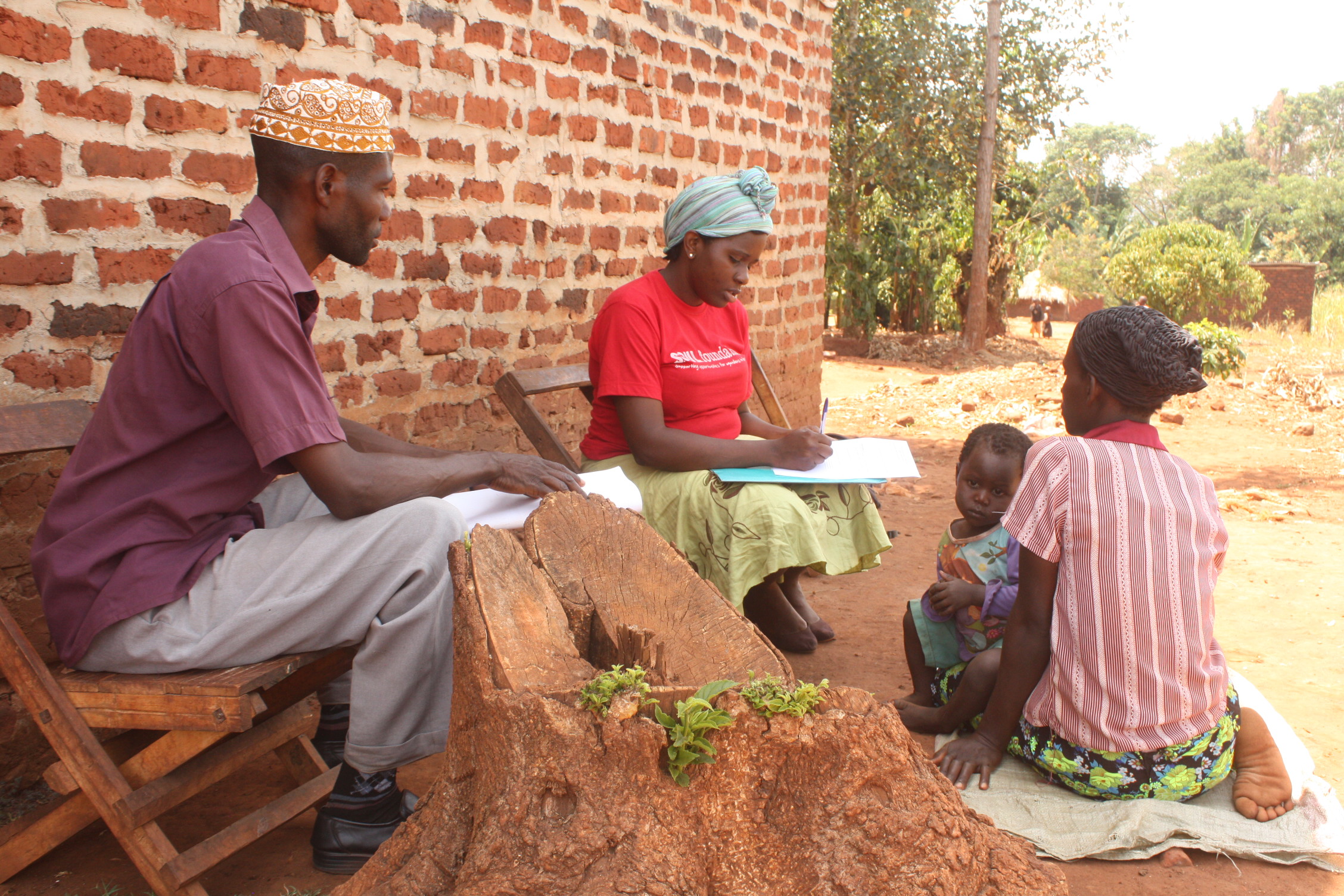There are few tools more powerful in development work than the art of listening. However, moving one step further and channeling this tool through rigorous research offers us the unique opportunity to see inside complex sets of issues. Through our research, we are able to capture reality in a way that no amount of informal observation allows us to do. My co-fellow Viola and I live and work in a situation that allows us to appreciate this contrast in quite a striking way. We wake up each morning in our simple, sleepy house in the middle of our village, greeting the families outside and walking the muddy roads to our offices at S.O.U.L. Foundation, and are able to observe each family’s struggles, innovations and unique realities. While we can engage deeply with each of these families who continue to accept us into their homes and lives, we cannot adequately compare their stories or experiences in any kind of meaningful and measurable way that can be responsibly manifested into community-based programming. So we turn to our research…
We interview mothers and pregnant women, some as young as 14, about what deters women in the community from delivering in Uganda’s health centers, what drives them to continue to deliver with traditional midwives (known more commonly by the increasingly taboo label of Traditional Birthing Attendants, or TBAs) and put themselves at risk (granted some of the most skilled and talented midwives I have met are among these traditional midwives – they are miracle workers), and what they wish would change about the Ugandan health system. They say the nurses abuse them, shout at them, even slap them, often failing to serve mothers who have just spent an hour and a half on the back of a boda boda (motorcycle taxi) driving up a muddy road through littered trading centers for their antenatal care (ANC) visits, only to have to return home to come back the next day, having not received the care they needed. The mothers are chastised for not bringing the materials they need to deliver in the health center can even be sent to the back of the line while those with the requisite ANC book, kitenge (fabric often used as a baby sling), plastic sheets and gloves get pushed to the front. So we say to ourselves, “the main problem is the attitude and behavior of the health workers.”
But it’s not that simple…
We visit each of the 16 health centers throughout the health sub-district to listen to their workers, the midwives who work tirelessly, short-staffed and overburdened, to meet the explosive maternity needs of this country. They say that when mothers come without the supplies they need and the health center lacks the provisions, they just can’t help them. They say they do everything they can, but they simply do not have the supplies to be able to give to the mothers themselves. They lack the staff to provide care to the dozens of mothers that come for ANC every day, lack adequate supplies of immunizations to offer the women who bring their children for postnatal care (PNC) visits, and must break the news to these mothers that they all need to come at once on a designated day when the medicines are available so that everyone can receive these services at the same time. The mothers, they say, are not informed or mobilized well enough to be able to interface with the health system. So we say to ourselves, “the main problem is that women lack the proper information and mobilization to make the most of their health center visits.”
But it’s not that simple…
We hold focus group discussions with the Village Health Teams (VHT) in each of our 11 sample villages across the health sub-district. These are the community health workers – the first level of the Ugandan health system – charged with the task of mobilizing women to attend ANC visits, to bring their newborns in for postnatal care and immunizations six weeks after delivery, and for supplementing the information given to them at the health centers. The VHTs express how they are supposed to be coordinating for these women to come to the health facilities on designated days in order to be properly served, but since the inception of the VHT program in 2010, in-service training for each team has been minimal at best. The required ten VHT members in each village has dwindled to the two most active, known as Community Medicine Distributors, leaving the rest of the VHTs out from any trainings or continuing medical education opportunities from the Ministry of Health or NGOs. Without training, without means of transport, without any sort of compensation or incentives to keep working in the community, the VHTs are barely able to do their intended work. So we say to ourselves, “the main problem is that every level of the health system lacks the appropriate training, supplies and resources to adequately assist the women in the community.”
But it’s not that simple…
We go to the District Health Officials and ask them about how they are addressing the issue of limited supplies, poor attitudes of the health workers, low staff attendance, and limited training opportunities for VHTs. They tell us that each district only gets a certain lump sum each quarter from the Ministry of Health, and that it is in no way enough to meet all the needs expressed by the health workers throughout the health sub-district. They tell us that the amount they receive depends on the needs conveyed through district reports, but these reports have to come from the lower rungs of the health center and have to be submitted in a timely manner in order for any action to be taken. Reporting mechanisms throughout the district are weak, and their ability to properly advocate for what the district needs remains limited. So we finally say to ourselves, “Clearly there is not simply one main problem, but rather a complex set of interwoven issues that are holding women in Uganda back from accessing the care that they need.”
It’s never that simple.
It is important to talk to women, to listen to the unique challenges of health workers, to observe the dedicated work of VHTs, and to read reports of the performance of the district health system. However, engaging in any of these activities in isolation will never offer the full picture that such comprehensive data collection can provide. Each challenge leads to recognition of a new challenge altogether. This is the driving reason why collecting data through more holistic research methods must be the first step in quality programmatic efforts in any context. Without such a robust study, we would never be able to provide S.O.U.L. Foundation with the full picture of what women are up against in eastern Uganda’s health system.
And of course, it’s still not that simple… While our data measures these various maternal health indices, it does not measure the sheer breadth of the myriad of challenges and epidemics that women face all over this country: domestic and gender-based violence, sexual abuse, workplace discrimination, sex work, trafficking. These are hurdles that women continue to confront the whole world over, and we know our research is only the tip of the iceberg.
For now, for what we cannot measure, we know that all we can do is observe, and observe deeply, as these women open their doors, their hearts and their worlds to us each and every day. We believe that our conversations with them empower them to speak their stories, their truths, and their voice. All we can hope, through programming or through that very simple act of listening, is that those voices are amplified. The more we listen, the more we learn, and the more we learn, the more we can work together to change this country, and this world.

